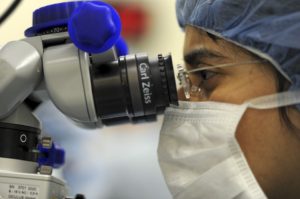Starship Medicine
 If you’ve ever watched the Star Trek TV show, or any of the franchise’s movies, you’ve probably noticed that spaceship medicine is different from what we’re accustomed to. Instead of a physical exam, on the Starship Enterprise, the doctor points a blinking device at the patient and arrives at an instant diagnosis of any health issue.
If you’ve ever watched the Star Trek TV show, or any of the franchise’s movies, you’ve probably noticed that spaceship medicine is different from what we’re accustomed to. Instead of a physical exam, on the Starship Enterprise, the doctor points a blinking device at the patient and arrives at an instant diagnosis of any health issue.
Could that ever happen in real life? It could—and actually has.
Chip maker and tech company Qualcomm has been, since 2012, sponsoring a Tricorder XPrize Competition, offering $2.5 million to the company that can diagnose, with remote sensors, 13 health conditions: anemia, urinary tract infection, diabetes, atrial fibrillation, stroke, sleep apnea, tuberculosis, chronic obstructive pulmonary disease, pneumonia, otitis, leukocytosis and hepatitis. The winning device would also be able to assess a patient’s vital signs, like blood pressure, respiratory rate and temperature through wireless sensors, imaging technologies and non-invasive replacements of laboratory equipment. (A second prize of $1 million was also part of the competition.)
The social benefits of such a device are obvious: a huge percentage of the country’s health care spending goes toward expensive testing procedures, and fast, accurate diagnoses are also the key to fast, successful treatments. Imagine a world where medical costs—including the costs of Medicare and health insurance premiums—are reduced by 30%, and people can buy a device that allows them to diagnose their own ailments.
In all, 312 teams entered the competition, including government-sponsored groups and medical corporations. The recently-announced winner: Final Frontier Medical Devices, founded by an emergency medicine doctor named Basil Harris.
Instead of a hand-held device, the winning tricorder—called DxtER, is roughly the size of a shoe box, containing several individual diagnostic devices and sensors that patients can apply to themselves. The devices, linked to an Apple iPad, will actually go beyond the specifications and diagnose 34 different medical conditions, in addition to the aforementioned vital signs. The next round of the competition will look for a way to create a commercial version.
Sources:




